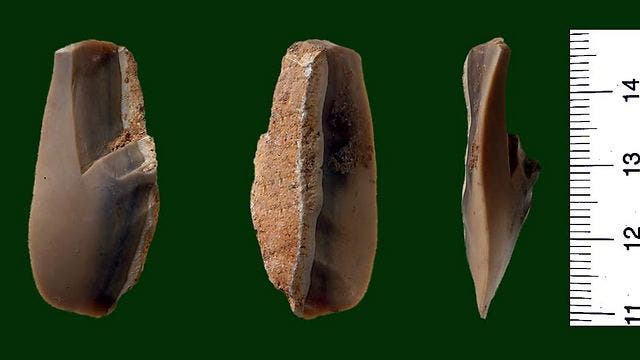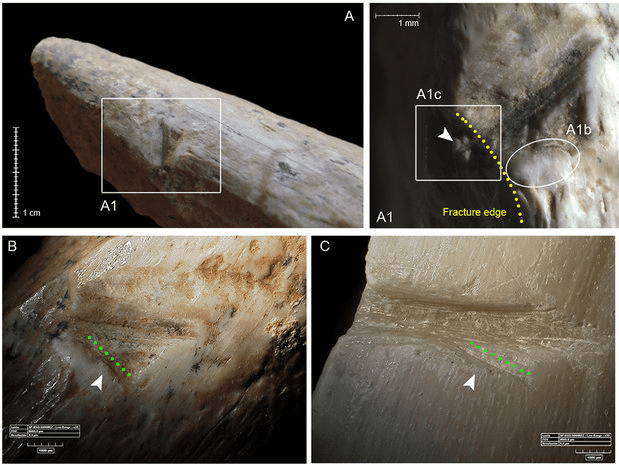
We owe all our species’ success to the aptness with which we use tools. Our opposable-thumbed hands, upright gait, and big brains were all fostered by evolution to accommodate the invention and use of tools. Some of the first evidence of tool use among hominids, our ancestors, can be traced back to some 2.5 million years ago. These primitive tools include flints — cutting instruments shaped from rocks — that were mainly used for hunting and butchering.
It’s not hard to imagine our ancestors using these flints for other purposes, other than cutting meat, but without direct evidence, it’s all speculation. The earliest such evidence might turn out to be flints and processed bones found in a cave in Israel. The animal bones seem to be sawed even though they were defleshed, suggesting a non-dietary purpose. The remains are between 300,000 and 420,0000 years old, and the tools themselves were fashioned by a yet to be identified Homo species.
Entering the cave of pioneers
The story of how the remains were found is just as remarkable. In the year 2,000, construction workers detonated explosives to clear a huge limestone boulder that was blocking a planned roadway outside of Tel Aviv in Israel. After the plume of dust faded, it was clear they had to abandon the road altogether for they opened the roof to a cave that was sealed off for more than 200,000 years.

Inside the Qesem Cave, as it is now known, archaeologists later found a treasure trove of artifacts, as well as hominid and animal remains. For instance, there’s a 300,000-year-old fireplace next to which tortoise shells were found. These roasted turtles are considered the oldest evidence of the consumption of cooked meat. The oldest knives and hand axes were also found here.
“By comparison,” said Professor Ron Barkai from Tel Aviv University who is the head of digging at Qesem Cave. “Europe only started seeing humans using knives 30,000 years ago. These knives were created 400,000 years ago. What happened here in Israel 400,000 years ago predates the rest of the world by hundreds of thousands of years

Concerning the people who used to live in the cave, things are a bit blurry. Only hominid teeth were found and absent other fossils, the cave’s occupants could have been Homo erectus, Neanderthals or some yet to be identified species.
“This cave has been unusually well preserved,” said Avi Gofer, an archaeologist from Tel Aviv University, for Ynetnews. “The people who lived here were a huge revolution (in the history of humanity). What these people did here is completely different than what other humans were doing; in terms of chiseling technology, behavior, hunting techniques, organization, use of fire, and much more. In other words, there was an explosion of change (at Qesem Cave), and a lot of innovations.”
Gofer and colleagues recently published a paper in which they describe two sharpened flint tools and a deer bone with distinct saw marks. What’s out of the ordinary is that the marks didn’t result from butchering. The flint tools show bone residues while the marks on the bone were made after it was broken and defleshed, according to Real Clear Science.
“The results of this study allow us to argue that at Qesem Cave, hominins were bringing selected body parts of hunted game to the cave and, after the meat, fat, and marrow were consumed, they occasionally used the discarded animal bones for non-dietary purposes,” the researchers write.
“The data presented here represents an innovative behaviour, practised between 420 and 300 kya, possibly the oldest evidence related to intentional non-dietary modification of bone through the use of specific stone tools,” they added.
This is only one piece of the puzzle. We still need to know who were the members of this early homo intelligentsia. Whoever they were, it’s clear they were way ahead of their time.






